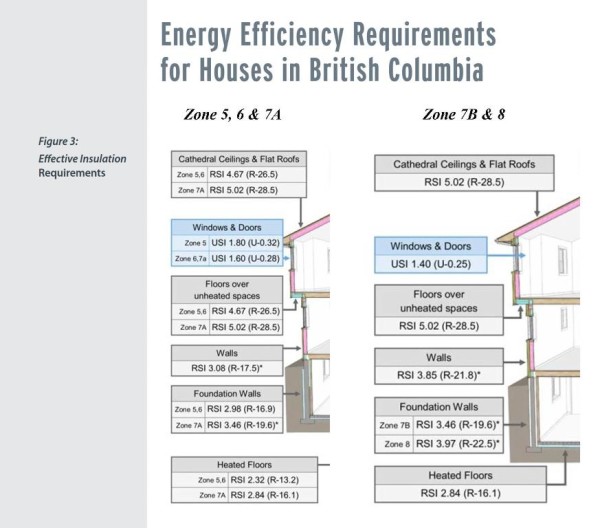I wanted to recap and touch on a few areas related to our construction industry after attending: Building Smart #22 presented by the Home Owner Protection Office, Branch of BC Housing (Presenter – Murray Frank of Constructive Home Solutions Inc.). Murray was a great speaker and kept everyone engaged and smiling throughout the seminar and, of course, touched on a number of areas relating to the current BC Building Code and current practices being used or maybe I should say… that should be used in different areas of residential construction taking place in British Columbia. He also hinted at a few possible up coming changes we will probably see in some of the future building code revisions.
- there will probably be a number of revisions coming down the pipe in the Universal Design Areas to help with aging in place, Handicap access etc.
- possible reassessment of seismic areas and design requirements after the recent earthquakes in the Haida Gwaii areas.
- coming in 2017 with some of the recent new legislation – the BC Building Code will have to be applied the same in all regions of BC, whereas currently we have some regions that have tweaked parts for just their covered areas.
- we will probably see the effective insulation values required for the different house assembly’s increase which could equate into thicker wall systems than the standard conventional 2×6 commonly used today, due to the fact that they have done just about everything possible with a conventional 2×6 wall system to achieve the current values. He noted that in the current Illustrated Guide for Energy Efficient Homes in zones 7A & 8, the code already specifies a higher effective R-value for the below grade foundation walls than what is specified for the above grade wood framed 2×6 walls that are out and exposed to a much larger temperature variation than the below grade walls will ever see.
Illustrated Guide courtesy of the Home Owner Protection Office, Branch of BC Housing
Our Pacific SmartWall® already offers our clients higher effective insulation options and, with this being a very cost effective upgrade, quite a number of our new home owners do elect for our Pacific SmartWall® System on their new home even in the southern areas of BC.
Another important area in construction that was discussed during the seminar was where Murray simplifies the installation of windows and details in the construction process connected to this subject and still make sure the home owners end up with a home that will last. There are many ways being used out there to install windows, some I think better than others, but I do like the method presented and referenced in the seminar. It keeps the process simple enough that it could be executed on site easily and also creates a weather tight assembly that will allow the windows to perform to the rated ability noted by the manufacturer. This method also allows the window’s bottom sill cavity to dry if by chance water does manage to enter. The main part of the detail is to make sure that the interior portion of the window gets rod & caulked to ensure a continuous seal. The remainder of the rough opening area where you quite often see the space filled with spray foam is left clear and breathable all the way to the exterior side of the wall so that there will never be any pressure differences that would actually help water to penetrate inward. He suggested thinking of this area being built very similar to the doors on your car, with the real seal being located on the inner portion of the opening and the remaining area left open to drain and dry as needed with no atmospheric pressure differences between the cavity area and the outside conditions.
Murray recommended that everyone should watch one of his earlier 2012 half day workshop seminar videos on this subject presented by himself and a few others. The workshop seminar was very interesting and is worth a view.

